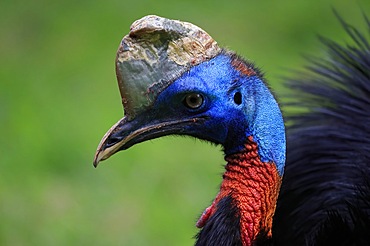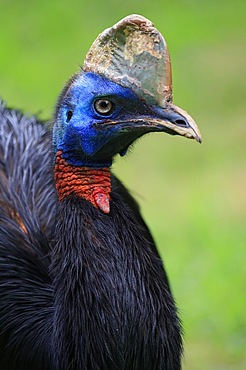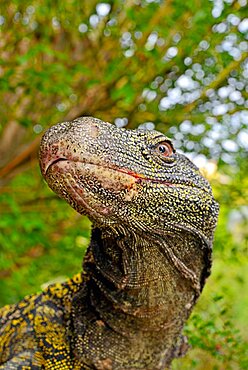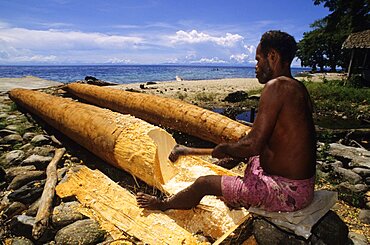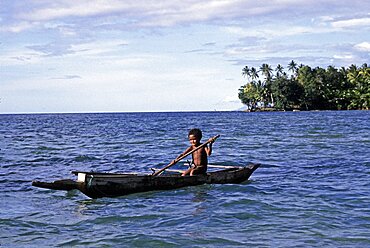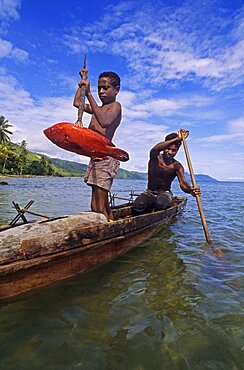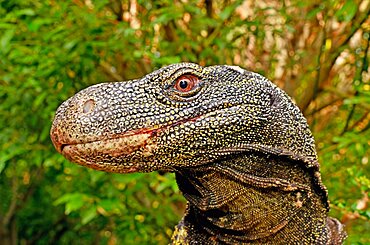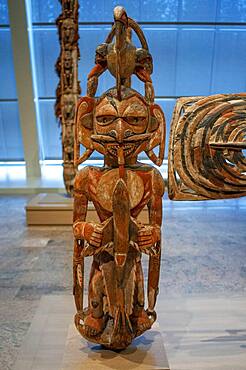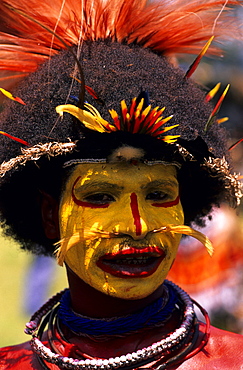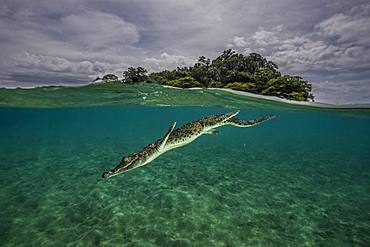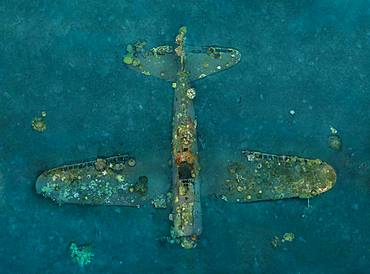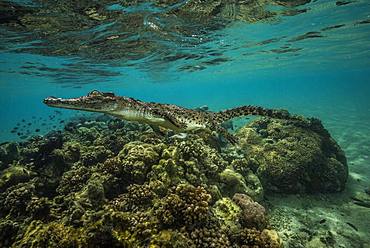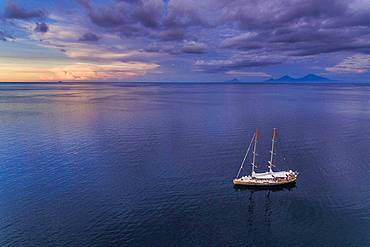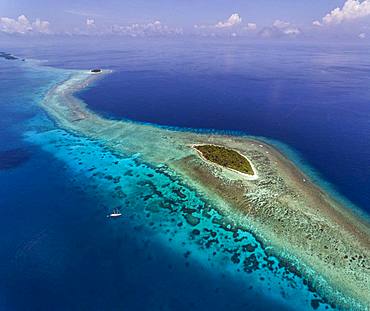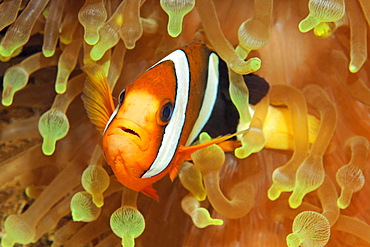Recent searches
Loading...
759-14660 - Clown Anemonefish, Amphiprion ocellaris, New Ireland, Papua New Guinea
759-14658 - Blackspotted Puffer, Arothron nigropunctatus, New Ireland, Papua New Guinea
759-14656 - Scuba Diver over Coral Reef, New Ireland, Papua New Guinea
759-14657 - Scuba Diver over Coral Reef, New Ireland, Papua New Guinea
759-14655 - Scuba Diver over Coral Reef, New Ireland, Papua New Guinea
759-14654 - Scuba Diver over Coral Reef, New Ireland, Papua New Guinea
759-14653 - Scuba Diver over Coral Reef, New Ireland, Papua New Guinea
759-14652 - Scuba Diver over Coral Reef, New Ireland, Papua New Guinea
759-14651 - Shoal of Longfin Batfish, Platax teira, New Ireland, Papua New Guinea
759-14649 - Shoal of Longfin Batfish, Platax teira, New Ireland, Papua New Guinea
759-14650 - Shoal of Longfin Batfish, Platax teira, New Ireland, Papua New Guinea
759-14648 - Shoal of Longfin Batfish, Platax teira, New Ireland, Papua New Guinea
759-14646 - Shoal of Celebes Sweetlips, Plectorhinchus chrysotaenia, New Ireland, Papua New Guinea
759-14647 - Shoal of Celebes Sweetlips, Plectorhinchus chrysotaenia, New Ireland, Papua New Guinea
759-14645 - Shoal of Celebes Sweetlips, Plectorhinchus chrysotaenia, New Ireland, Papua New Guinea
759-14673 - Crinoids in Coral Reef, Comanthina schlegeli, New Ireland, Papua New Guinea
759-14671 - Scuba Diver doing safety stop, New Ireland, Papua New Guinea
759-13853 - Shoal of Slender Pinjalo Snapper, Pinjalo lewisi, Tufi, Solomon Sea, Papua New Guinea
759-13852 - Shoal of Slender Pinjalo Snapper, Pinjalo lewisi, Tufi, Solomon Sea, Papua New Guinea
759-13851 - Shoal of Slender Pinjalo Snapper, Pinjalo lewisi, Tufi, Solomon Sea, Papua New Guinea
759-13850 - Shoal of Slender Pinjalo Snapper, Pinjalo lewisi, Tufi, Solomon Sea, Papua New Guinea
759-13848 - Shoal of Slender Pinjalo Snapper, Pinjalo lewisi, Tufi, Solomon Sea, Papua New Guinea
759-13849 - Shoal of Slender Pinjalo Snapper, Pinjalo lewisi, Tufi, Solomon Sea, Papua New Guinea
759-13847 - Hawksbill Sea Turtle, Eretmochelys imbricata, Tufi, Solomon Sea, Papua New Guinea
759-13846 - Hawksbill Sea Turtle, Eretmochelys imbricata, Tufi, Solomon Sea, Papua New Guinea
759-13845 - Shoal of Blackfin Barracuda, Sphyraena qenie, Tufi, Solomon Sea, Papua New Guinea
759-13843 - Shoal of Blackfin Barracuda, Sphyraena qenie, Tufi, Solomon Sea, Papua New Guinea
759-13844 - Shoal of Blackfin Barracuda, Sphyraena qenie, Tufi, Solomon Sea, Papua New Guinea
759-13842 - Shoal of Blackfin Barracuda, Sphyraena qenie, Tufi, Solomon Sea, Papua New Guinea
759-13841 - Shoal of Blackfin Barracuda, Sphyraena qenie, Tufi, Solomon Sea, Papua New Guinea
759-13840 - Shoal of Blackfin Barracuda, Sphyraena qenie, Tufi, Solomon Sea, Papua New Guinea
759-13839 - Blackspotted Puffer, Arothron nigropunctatus, Tufi, Solomon Sea, Papua New Guinea
759-13838 - Pair of Spinecheek Clownfish, Premnas aculeatus, Tufi, Solomon Sea, Papua New Guinea
759-13837 - Pair of Spinecheek Clownfish, Premnas aculeatus, Tufi, Solomon Sea, Papua New Guinea
759-13836 - Spinecheek Clownfish, Premnas aculeatus, Tufi, Solomon Sea, Papua New Guinea
759-13834 - Pair of Clown Anemonefish, Amphiprion percula, Tufi, Solomon Sea, Papua New Guinea
759-13835 - Pair of Clown Anemonefish, Amphiprion percula, Tufi, Solomon Sea, Papua New Guinea
759-13833 - Pair of Clown Anemonefish, Amphiprion percula, Tufi, Solomon Sea, Papua New Guinea
759-13832 - Shoal of Rigid Razorfishes, Centriscus scutatus, Tufi, Solomon Sea, Papua New Guinea
759-13830 - Scuba Diver in Coral Reef, Tufi, Solomon Sea, Papua New Guinea
759-13831 - Yellowback Anthias over Coral Reef, Pseudanthias tuka, Tufi, Solomon Sea, Papua New Guinea
759-13829 - Whip Coral in Coral Reef, Ellisella ceratophyta, Tufi, Solomon Sea, Papua New Guinea
832-399990 - Northern cassowary (Casuarius unappendiculatus), adult, portrait, captive, Papua New Guinea, Oceania
832-399989 - Northern cassowary (Casuarius unappendiculatus), adult, portrait, captive, Papua New Guinea, Oceania
860-291308 - Northern green tree python (Morelia azurea), on black background
860-291300 - Yellow tree monitor (Varanus reisingeri), on black background
860-291316 - Crocodile Monitor (Varanus (Papusaurus) salvadorii ), on black background
860-290995 - Crocodile monitor, Papua monitor or Salvadori's monitor (Varanus salvadorii). South New Guinea
860-290927 - Preparation of Sago Fergusson island Papua New Guinea
860-290923 - Boy and outrigger canoe Fergusson island Papua New Guinea
860-290926 - Fisherman on canoe Fergusson island Papua New Guinea
860-290925 - Boy and Giant Clam Fergusson island Papua New Guinea
860-290928 - Children on Sago trunk Fergusson island Papua New Guinea
860-290996 - Crocodile monitor, Papua monitor or Salvadori's monitor (Varanus salvadorii). South New Guinea
860-290924 - Boy and bow Fergusson island Papua New Guinea
1348-4549 - Long Island Volcano, Papua New Guinea, True Colour Satellite Image
1348-4583 - Hawooi And Kikori Deltas, Papua New Guinea, True Colour Satellite Image. True colour satellite image of the deltas of the rivers Hawooi (left) and Kikori (right)
1350-3534 - A snorkeler dives down with a whaleshark, Rhincodon typus, under a fishing platform, these sharks are friends with the fishermen who hand feed them at Cendrawasih Bay, West Papua, Indonesia, Pacific Ocean
1350-2073 - New Ireland Malagan funerary statue in at the Metropolitan Museum of Art museum, New York, USA. New Ireland is part of the Bismarck Archipelago, situated north of New Guinea, and has an estimated population of 100,000. The Dutch first encountered the island in 1616, and today New Ireland is a province of Papua New Guinea. Nineteen different languages are spoken on the island, and it is divided by a chain of mountains into three distinct regions: northern, central, and southeastern. The art of New Ireland traditionally centered on mortuary ceremonies and feasts to honor the dead. In northern New Ireland, the name given to these elaborate ceremonies is malagan, which is also the term used for the carved and painted sculptures associated with the ceremonies.
1113-103111 - Treekangaroo eating leaves, Papua New Guinea, Oceania
1113-104077 - Child with drum at the Hulli Sing Sing festival, Mt Hagen, Eastern Highlands, Papua New Guinea, Melanesia
1113-104076 - Local man with painted face at the Huli Sing Sing festival, Mt Hagen, Eastern Highlands, Papua New Guinea, Melanesia
1113-104078 - Local tribe with painted faces at the Sing Sing festival, Huli, Mt Hagen, Eastern Highlands, Papua New Guinea, Melanesia
1113-103127 - Man with facial painting at Singsing Dance, Lae, Papua New Guinea, Oceania
1113-104080 - Local man with yellow painted face, Portrait, Huli Sing Sing festival, Mt Hagen, Eastern Highlands, Papua New Guinea, Melanesia
1113-103126 - Man with facial painting at Singsing Dance, Lae, Papua New Guinea, Oceania
1113-103120 - Man with facial painting at Singsing Dance, Lae, Papua New Guinea, Oceania
1113-103123 - Man with facial painting at Singsing Dance, Lae, Papua New Guinea, Oceania
1113-103119 - Man with facial painting at Singsing Dance, Lae, Papua New Guinea, Oceania
1113-103124 - Man with facial painting at Singsing Dance, Lae, Papua New Guinea, Oceania
1113-104079 - Baining Fire Dance, Rabaul, East New Britain, Papua New Guinea, Melanesia
1113-104081 - Local man with yellow painted face, Wigman, Portrait, Sing Sing festival, Mt Hagen, Eastern Highlands, Papua New Guinea, Melanesia
832-385572 - Man snorkeling in the clear waters, Buka, Papua New Guinea, Oceania
860-288485 - Peach-throated monitor (Varanus jobiensis)
860-287444 - Tara Pacific expedition - november 2017 Saltwater crocodile (Crocodylus porosus) diving down near Garua Island, Kimbe Bay, Papua New Guinea
860-287442 - Tara Pacific expedition - november 2017 Kimbe Bay, papua New Guinea, Zero wreck: Coral growth on this wreck is from a period of 74 years ! D: 15 m The ZERO, is a Japanese WW2 fighter plane wreck. This Zero wreck was discovered in January 2000 by local William Nuli while he was freediving for sea cucumbers. He asked the Walindi Plantation Resort dive team if they might know what it was, and when they investigated they uncovered the intact wreck of a Zero fighter, resting on a sedimented bottom in 15 m depth. This World War II Japanese fighter is almost completely intact. The plane is believed to have been ditched, the pilot is believed to have survived, but was never found on the island. He never returned home. Maybe he disappeared in the jungle? On 26th December 1943, during the battle of Cape Gloucester, the Japanese pilot made an emergency landing, ditching his Mitsubishi A6M Zero plane into the sea approximately 100m off West New Britain Province. The plane was piloted by PO1 Tomiharu Honda of the 204st K?k?tai. His fate is unknown but it is believed the he made a controlled water landing after running out of fuel and survived. Although he failed to return to his unit, the plane was found with the throttle and trim controls both set for landing and the canopy was open. There are no visible bullet holes or other shrapnel damage and the plane is still virtually intact after over 70 years underwater. It is a A6M2 Model 21 Zero, made famous for its use in Kamikaze attacks by the Japanese Imperial Navy. The wreck has the Manufacture Number 8224 and was built by Nakajima in late August 1942.
860-287445 - Tara Pacific expedition - november 2017 Saltwater crocodile exhaling through the nose (bouyancy control) near Garua Island, Kimbe Bay, Papua New Guinea
860-287440 - Tara Pacific expedition - november 2017 Zero wreck, vertical view Orthomosaic from 3D photogrammetry (13500 x 10000 px). D: 15 m Kimbe Bay, papua New Guinea, Coral growth on this wreck is from a period of 74 years ! The ZERO, is a Japanese WW2 fighter plane wreck. This Zero wreck was discovered in January 2000 by local William Nuli while he was freediving for sea cucumbers. He asked the Walindi Plantation Resort dive team if they might know what it was, and when they investigated they uncovered the intact wreck of a Zero fighter, resting on a sedimented bottom in 15 m depth. This World War II Japanese fighter is almost completely intact. The plane is believed to have been ditched, the pilot is believed to have survived, but was never found on the island. He never returned home. Maybe he disappeared in the jungle? On 26th December 1943, during the battle of Cape Gloucester, the Japanese pilot made an emergency landing, ditching his Mitsubishi A6M Zero plane into the sea approximately 100m off West New Britain Province. The plane was piloted by PO1 Tomiharu Honda of the 204st K?k?tai. His fate is unknown but it is believed the he made a controlled water landing after running out of fuel and survived. Although he failed to return to his unit, the plane was found with the throttle and trim controls both set for landing and the canopy was open. There are no visible bullet holes or other shrapnel damage and the plane is still virtually intact after over 70 years underwater. It is a A6M2 Model 21 Zero, made famous for its use in Kamikaze attacks by the Japanese Imperial Navy. The wreck has the Manufacture Number 8224 and was built by Nakajima in late August 1942.
860-287443 - Tara Pacific expedition - november 2017 Saltwater crocodile (Crocodylus porosus) on a small reef, near Garua Island, Kimbe Bay, Papua New Guinea,
860-287441 - Tara Pacific expedition - november 2017 Yanaba Island, Egum Atoll, Papua New Guinea, Old man of Yanaba.
860-287439 - Tara Pacific expedition - november 2017 Tara in Kimbe Bay, papua New Guinea, H: 103,6 m, mandatory credit line: Photo: Christoph Gerigk, drone pilot: Guillaume Bourdin - Tara Expeditions Foundation
860-287437 - Tara Pacific expedition - november 2017 Small coral island and adjacent reef, near Yanaba Island, Papua New Guinea, H: 536,6 m, mandatory credit line: Photo: Christoph Gerigk, drone pilot: Guillaume Bourdin - Tara Expeditions Foundation
860-287438 - Tara Pacific expedition - november 2017 Small coral island and adjacent reef, near Yanaba Island, Papua New Guinea, H: 452.3 m, mandatory credit line: Photo: Christoph Gerigk, drone pilot: Guillaume Bourdin - Tara Expeditions Foundation
1116-43708 - Kula Rings Which Are Traded Throughout The Trobriand Islands, Trobriand Islands, Papua New Guinea
1116-43707 - A Cuscus (Papua New Guinea Tree Possum), Papua New Guinea
832-381547 - Baining Fire Dance, Kokopo, Rabaul, East New Britain, Papua New Guinea, Oceania
832-379676 - Bungalows, Papua Diving Resort, Kri Island in the Dampier Strait, West Papua, Indonesia, Asia
832-379677 - Coconut trees (Cocos nucifera), Arborek Island, Raja-Ampat, Western New Guinea, Indonesia, Asia
832-379675 - View of city with harbor, Sorong, West Papua, Western New Guinea, Indonesia, Asia
832-379678 - Landing stage, Arborek Island, Raja-Ampat, Western New Guinea, Indonesia, Asia
832-380311 - Papua Diving Resort, Raja-Ampat, Kri, Dampier Strait, Western New Guinea, Indonesia, Asia
832-380313 - Forested limestone cliffs, Gam, Dampier Strait, Raja Ampat, Western New Guinea, Indonesia, Asia
832-380312 - Coconut tree (Cocos nucifera) with fruits, village Yenbuba, Mansuar, Raja-Ampat, Western New Guinea, Indonesia, Asia
1116-39723 - Yellow pygmy seahorse (Hippocampus bargibanti), also known as Bargibant's Pygmy Seahorse, camouflaged in coral. They are found from Southern tropical Japan, throughout the Philippines, Indonesia, east to Palau, Papua New Guinea, Solomon Islands, Fiji, Van
1116-39721 - Yellow pygmy seahorse (Hippocampus bargibanti), also known as Bargibant's Pygmy Seahorse. They are found from Southern tropical Japan, throughout the Philippines, Indonesia, east to Palau, Papua New Guinea, Solomon Islands, Fiji, Vanuatu and the Great Bar
832-379187 - Clarks anemonefish (Amphiprion clarkii) in bladder anemone (Entacmaea quadricolor), Raja Ampat Archipelago, Papua Barat, Western New Guinea, Pacific Ocean, Indonesia, Asia
832-379186 - Clark's anemonefish (Amphiprion clarkii) in bubble-tip anemone (Entacmaea quadricolor), Raja Ampat archipelago, Papua Barat, Western New Guinea, Pacific Ocean, Indonesia, Asia
1184-2315 - Young people practicing traditional dance, Manus Island, Admiralty Islands, Papua New Guinea, Pacific










































